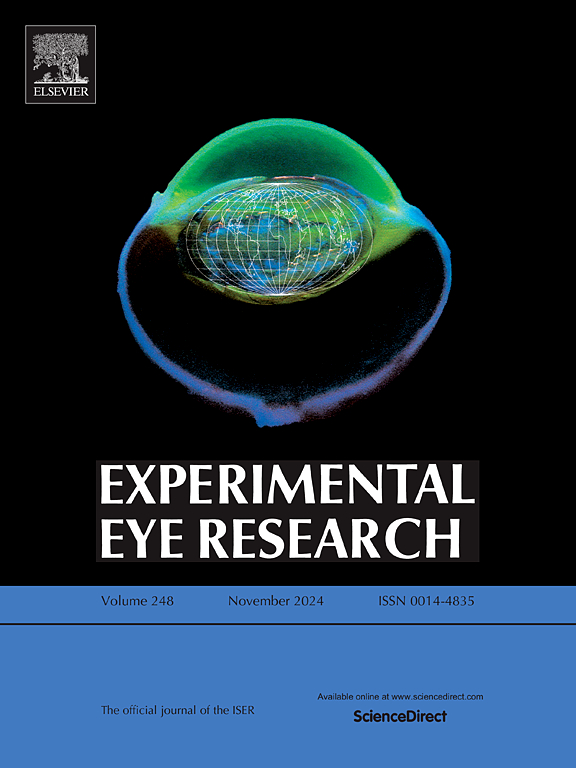In vivo changes in the gradient of refractive index distribution in the accommodating human lens
IF 3
2区 医学
Q1 OPHTHALMOLOGY
引用次数: 0
Abstract
Previously, we observed that accommodative rounding of the young human lens was accompanied by a redistribution in its internal free water content that resulted in a more linear water gradient across the anterior region of the lens. We hypothesised that this would produce a smoother gradient of refractive index (GRIN) which would, in turn, increase the internal lens refractive contribution to lens power during accommodation. However, in vivo studies of the human lens GRIN changes during accommodation remain limited and report mixed findings. To gain further insight into this, we employed our established magnetic resonance imaging (MRI) protocols to measure the changes in lens geometry and GRIN for 10 young (aged 20–27 years) and 14 middle-aged (aged 48–55 years) adults under a 3 Dioptre (D) accommodative stimulus. The MRI-derived lens measurements were then modelled in Zemax OpticStudio software to quantify the refractive contribution of the GRIN changes to the overall lens power increase during accommodation. In young participants, we observed a significant smoothing of the anterior GRIN, which contributed some 1.47–1.59 D of the total 3.04 D increase in lens power under the 3 D accommodative stimulus. In contrast, presbyopic lenses showed no significant changes in geometry or GRIN, culminating in only a total 0.62 D increase in lens power. These findings support the presence of an intracapsular mechanism of accommodation (ICMA) and highlight the need to consider internal lens optics alongside mechanical properties when developing new treatments for presbyopia.
体内调节人体晶状体中折射率分布梯度的变化
以前,我们观察到,年轻的人类晶状体的可调节的圆形伴随着内部自由含水量的重新分配,导致晶状体前部区域的水梯度更线性。我们假设这将产生更平滑的折射率梯度(GRIN),这反过来又会增加内部透镜在调节期间对透镜功率的折射贡献。然而,在调节过程中人类晶状体GRIN变化的体内研究仍然有限,并且报告了不同的结果。为了进一步了解这一点,我们采用我们已经建立的磁共振成像(MRI)方案来测量10名年轻人(20-27岁)和14名中年人(48-55岁)在3度(D)调节刺激下晶状体几何形状和GRIN的变化。然后在Zemax OpticStudio软件中对mri衍生透镜测量进行建模,以量化调整期间GRIN变化对透镜总功率增加的折射贡献。在年轻参与者中,我们观察到前眼GRIN明显平滑,在3d调节刺激下晶状体度数增加的3.04 D中,前眼GRIN贡献了1.47-1.59 D。相比之下,老花镜在几何形状和GRIN方面没有明显的变化,最终只增加了0.62 D的透镜功率。这些发现支持囊内调节机制(ICMA)的存在,并强调在开发老花眼的新治疗方法时,需要考虑内晶状体光学和机械特性。
本文章由计算机程序翻译,如有差异,请以英文原文为准。
求助全文
约1分钟内获得全文
求助全文
来源期刊

Experimental eye research
医学-眼科学
CiteScore
6.80
自引率
5.90%
发文量
323
审稿时长
66 days
期刊介绍:
The primary goal of Experimental Eye Research is to publish original research papers on all aspects of experimental biology of the eye and ocular tissues that seek to define the mechanisms of normal function and/or disease. Studies of ocular tissues that encompass the disciplines of cell biology, developmental biology, genetics, molecular biology, physiology, biochemistry, biophysics, immunology or microbiology are most welcomed. Manuscripts that are purely clinical or in a surgical area of ophthalmology are not appropriate for submission to Experimental Eye Research and if received will be returned without review.
 求助内容:
求助内容: 应助结果提醒方式:
应助结果提醒方式:


